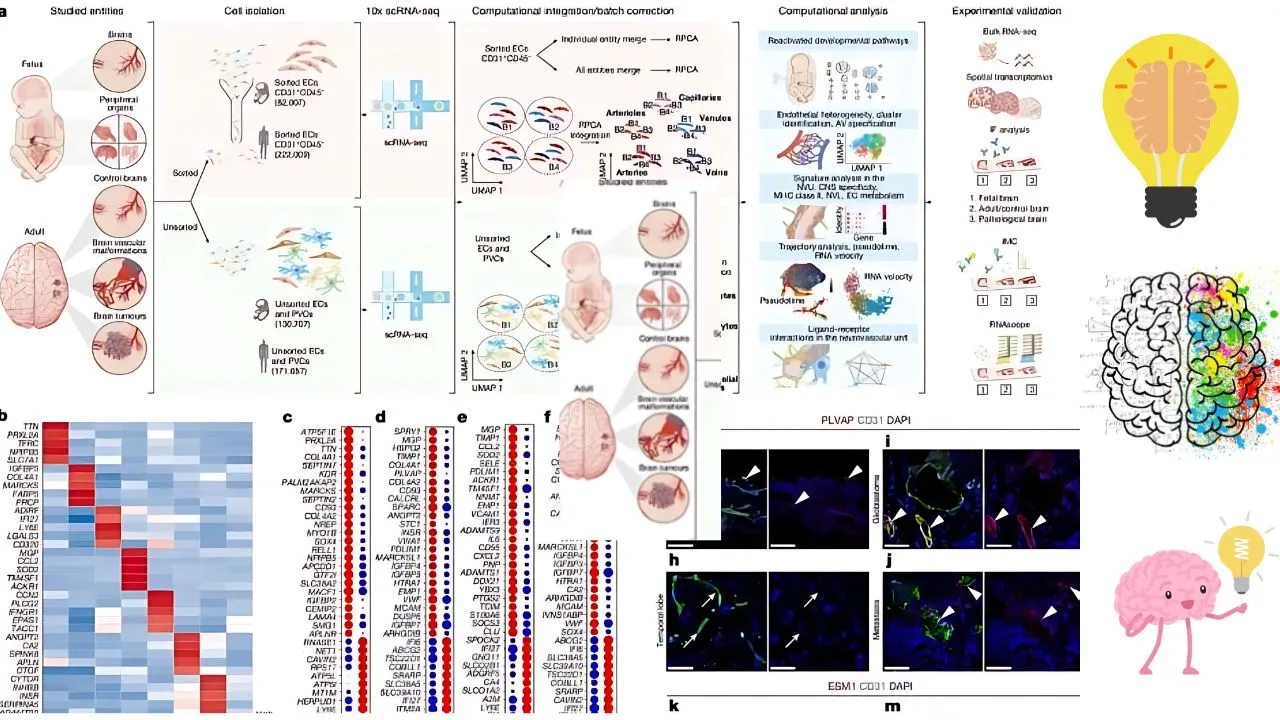An international consortium of researchers, led by University Health Network (UHN) in Toronto and University of Zurich, has constructed the first-ever molecular atlas of the human brain vasculature at single-cell resolution. This groundbreaking work spans from early development to adulthood and through various disease stages, including brain tumors and brain vascular malformations.
Table of Contents
Key Highlights
Collaboration and Scope:
- The consortium includes teams from prestigious institutions like UHN’s Krembil Brain Institute, University of Zurich, ETH Zurich, and Weill Cornell Medicine.
- The study involved isolating blood vessels from human brains at different stages: early development, adulthood, brain tumors, and brain vascular malformations.
Endothelial Cell Behavior:
- Researchers discovered that endothelial cells, which line blood vessels, behave differently across brain development stages. These cells may play a more crucial role in neurovascular signaling networks than previously understood.
Study Insights
Importance of Brain Vasculature:
- The brain’s vasculature, comprising blood vessel cells, genes, and pathways, is vital for the proper functioning of the brain from early development to adulthood and during diseases like brain tumors and stroke.
Single-Cell RNA Sequencing:
- The team performed single-cell RNA sequencing on over 600,000 cells from 117 samples, providing an unprecedented look into the brain’s vasculature.
Growth and Reactivation:
- In a healthy adult brain, vascular growth stops almost completely over time. However, brain tumors and vascular malformations can reactivate blood vessel growth, resembling the growth seen in early brain development. This reactivation had never been described before.
Unique Findings
Differences in Brain Vasculature:
- The study showed how the human brain’s vasculature differs from that of other organs both during development and in adulthood. In disease states, the brain vasculature becomes more similar to peripheral organs.
Endothelial Cell Evolution:
- Endothelial cells, crucial for the blood-brain barrier, can evolve into antigen-presenting cells during disease, triggering immune responses.
Future Therapeutic Potential
Therapy Insights:
- Understanding blood vessel growth and interactions with the immune system can lead to therapies that inhibit vascular growth while boosting the immune response. This combination could potentially treat brain tumors and vascular malformations.
Early Detection and Treatment:
- By identifying growth patterns shared between early developing brains and brain tumors, clinicians could monitor and treat diseases earlier, improving patient outcomes.
Impact on Research
Cross-Disciplinary Benefits:
- This atlas will be a valuable resource for scientists across various fields, including developmental biology, vascular biology, computational biology, tumor biology, neuroscience, immunology, and genetics.
Future Research:
- The study builds on recent momentum in brain vascular biology, offering endless possibilities for future research and therapeutic developments.
Conclusion
This molecular atlas marks a significant advancement in understanding the human brain vasculature. By uncovering the intricacies of blood vessel behavior from development to disease, this research opens new doors for potential therapies and early disease detection, paving the way for improved patient outcomes in the future.
Read More:

